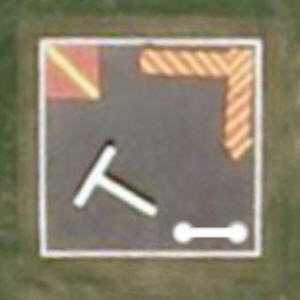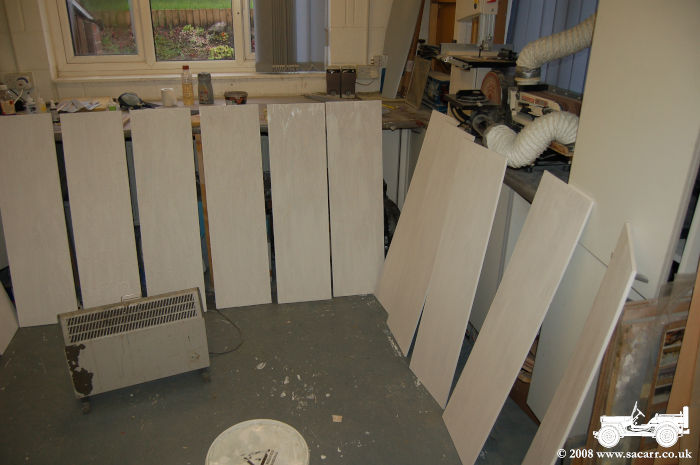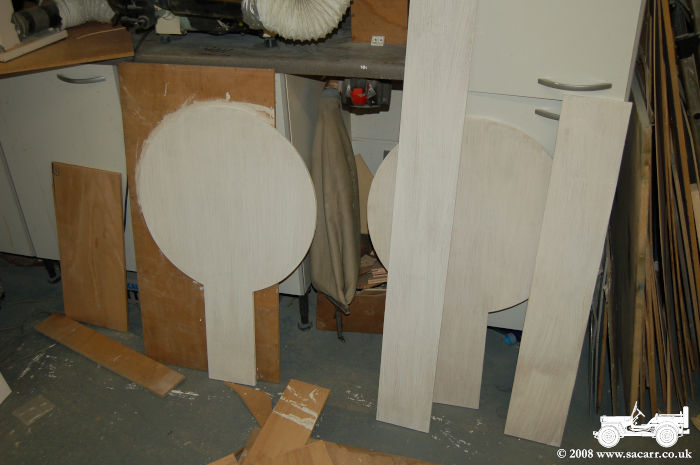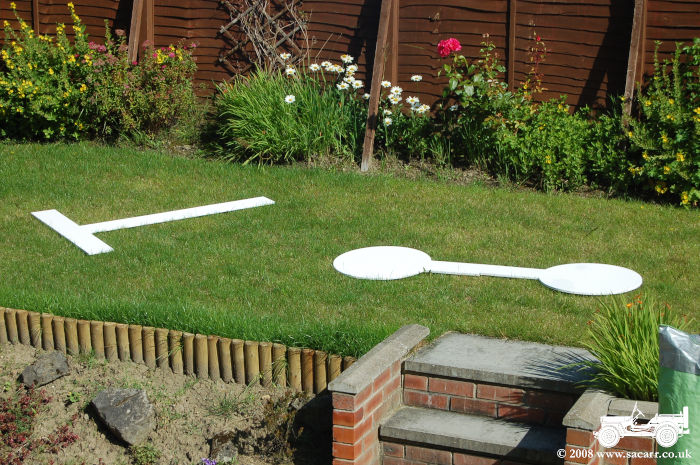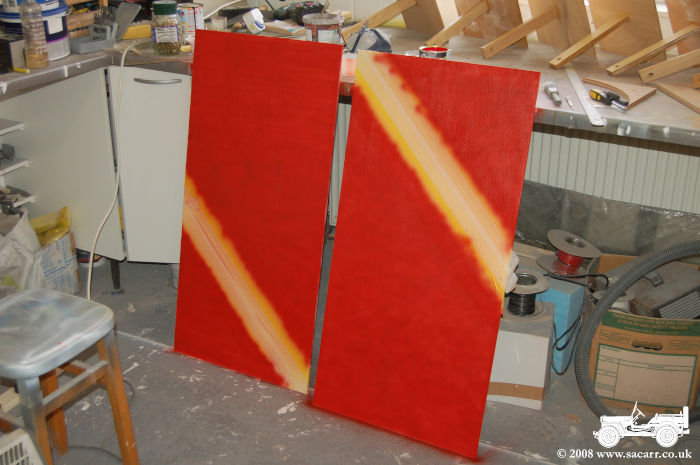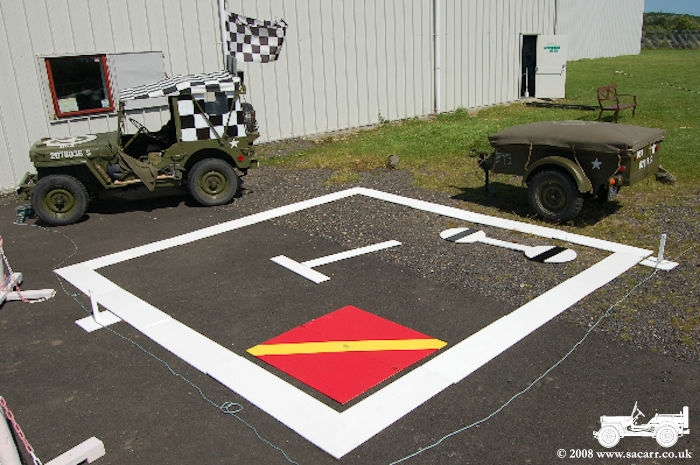|
The square was marked out on the ground near to the control tower. The white edged side were approximately 40 feet square, with the internal surface either bitumen, ashes, sealed gravel, turf or even bare earth. It was usually blackened to provide a contrasting background to the symbols upon it. There were four basic signals:- a) the red square signal
All of these objects were made of timber in hinged sections so that they could be folded up when not in use. The reverse sides were painted black so they would not be visible from the air. |
|
| My
Signal Square will use what ever background material we are displaying
on ( grass, concrete, tarmac etc ) with the edging pieced together from
16 sheets of ply. It wouldn't be practical to carry or display a
fullsized square and symbols, so I opted for a 1/3 scale version which
was a compromise between manageable transport and large enough to look
respectable.
All the parts are cut from 3/8 ply and painted to weatherproof them. The red square and dumbell fold in half to aid transport, the 'T' is two separate pieces. I'm not making the right hand circuit indicator as it is unnecessary weight to carry around. |
|
|
|
|
| Red
Signal Square
A red square indicated that the aerodrome rules were temporarily suspended, and special arrangements were in operation. One yellow diagonal cross-bar indicated that the state of the landing ground or a temporary obstruction required caution by pilots when landing. If the square had two yellow diagonal cross-bars, this meant a total prohibition of landing. |
|
|
Dumb Bell Signals A white dumb bell indicated that take-offs and landings were to be made on the runways only, and that all taxying must be on paved surfaces only. A white dumb bell with black bars superimposed across the circles meant that landings and take-offs must be on runways only, but grass surfaces may be used for taxiing, subject to standard serviceability markings. |
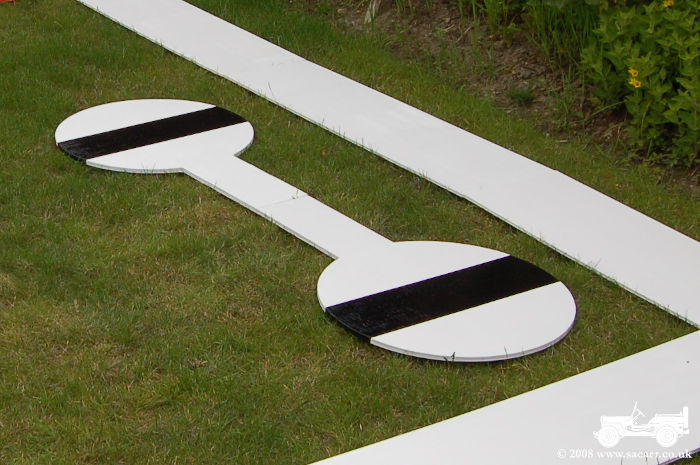
|
|
Landing 'T' The 'T' was usually mounted on a pivot for ease of turning, and supported on castor wheels or skids. It was lined up with the wind direction, and an aircraft landed along the 'T' towards the cross arm. The Flying Control officer on duty had to change the direction of the 'T' whenever the wind direction changed. |
|
|
|
|
